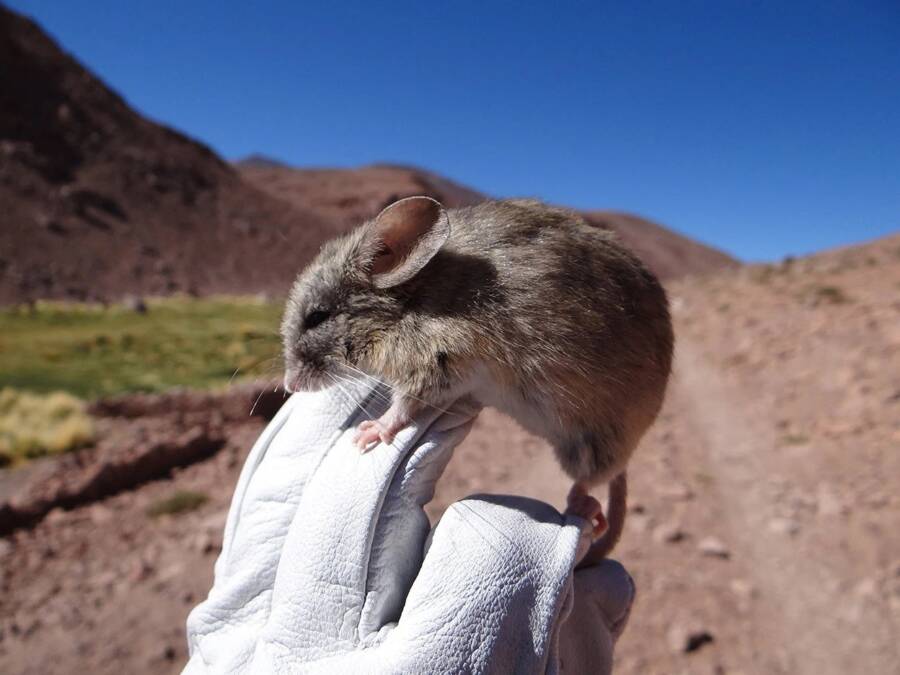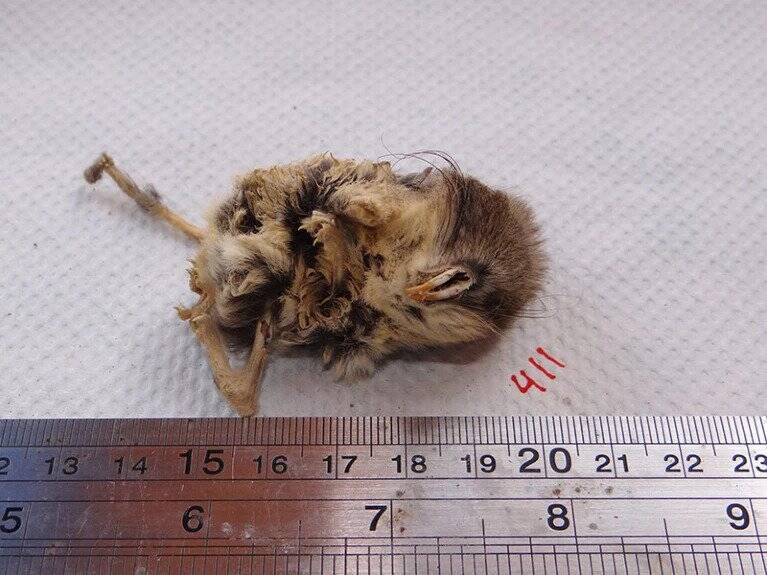Both living and dead mice have been found atop Andean volcanoes, raising questions of how they got there — and why.

Marcial Quiroga-CarmonaLeaf-eared mice like this one have recently been discovered at high, inhospitable altitudes.
In the 1970s and 80s, archaeologists exploring the Andean peaks made a curious discovery: mice cadavers. Because the landscape there is so inhospitable to life — rocky, freezing, windy — they concluded that the mice had been inadvertently brought there by Incas centuries ago. But now, scientists have documented both live mice and 13 “freeze-dried, mummified mice” in the area, raising questions of what the rodents are doing there.
“It just boggles the mind that any kind of animal, let alone a warm-blooded mammal, could be surviving and functioning in that environment,” Jay Storz, a professor of biological sciences at the University of Nebraska–Lincoln, said in a statement. “When you experience it all firsthand, it even further impresses upon you: How in God’s name is anything living up there?”
As the statement explains, experts had long assumed that the mice carcasses found in the Andes in the 1970s and 80s had been brought by the Incas, who traveled up the mountains to conduct child sacrifice rituals. The mice, they speculated, could have been accidentally transported there in firewood or other supplies.
But then Storz captured a live mouse atop the 22,000-foot peak of Llullaillaco in 2020.

Jay Storz, University of Nebraska–LincolnThe summit of Volcán Salín, one of the Andean volcanoes where researchers found mummified mice.
Since then, as described in a new study in Current Biology, Storz and his colleagues have collected the mummified remains of 13 leaf-eared mice, some just a few decades old, others 350 years old. Since the Incas visited the region a century before then, it seems that the mice made their way to the high, cold, freezing peaks of their own accord. But why?
“This is truly surprising and challenges our previous assumptions about the adaptability of species to extreme environments,” Emmanuel Fabián Ruperto, a behavioral ecologist at the Argentine Institute for Dryland Research in Mendoza who wasn’t part of the study, told Nature. “Food availability at such altitudes [is] virtually non-existent So, what do these animals feed on?”
That’s one of the many questions that Storz and his team are still trying to answer. But they have figured out some things about the Andean mice.
For starters, a genomic study of the mice found that some were closely related, possibly siblings or offspring, and that and there was an equal number of male and female mice. This, and evidence of mice burrows in the area, suggests that the mice are indeed living atop the peaks and not just passing through the region on their way to somewhere else.
Storz and his team also found that the mountain mice had DNA in common with mice living at much lower altitudes, negating a theory that the mountain mice were a “distinct subpopulation” from the others.
“Our genomic data indicate no,” Storz said. “[T]he mice from the summits, and those from the flanks or the base of the volcanoes in the surrounding desert terrain, are all one big happy family.”
So why did the mice summit the Andean peaks? Storz speculated that perhaps it’s safer from predators at high altitudes, though the mice would still have to contend with the difficult landscape.

Marcial Quiroga-CarmonaOne of the 13 mummified mice found in the Andes.
“Certainly, if you’re hunkering down on top of a 6,000-meter volcano, you’re at least safe from [predators like foxes, mountain lions, and birds of prey],” Storz said. “You just have other things to worry about.”
As such, Storz and his colleagues still have many questions to answer about the leaf-eared mice living at high altitudes. At the moment, they’re working on establishing colonies of mice and acclimating them to conditions from 20,000 feet, to see how the mice are able to cope.
But Storz noted that the discovery of mice in atop Andean volcanoes has shown that scientists “underestimated the abilities of mammals to survive and function in those extreme conditions.”
“For miles around, it’s this really austere, Martian-like landscape, a hostile environment, and then the summits of these volcanoes are even more hostile,” he told Scientific American. “When you experience these environments firsthand on the summits of these volcanoes, it’s just mind-boggling that [mammals] could be living up there.”
After reading about the mummified mice discovered atop Andean volcanoes, discover the story of “Stuckie” the mummified dog who was trapped in a tree for 50 years. Or see how scientists were baffled by the case of a Bulgarian man who was found mummified days after he was last seen alive.





